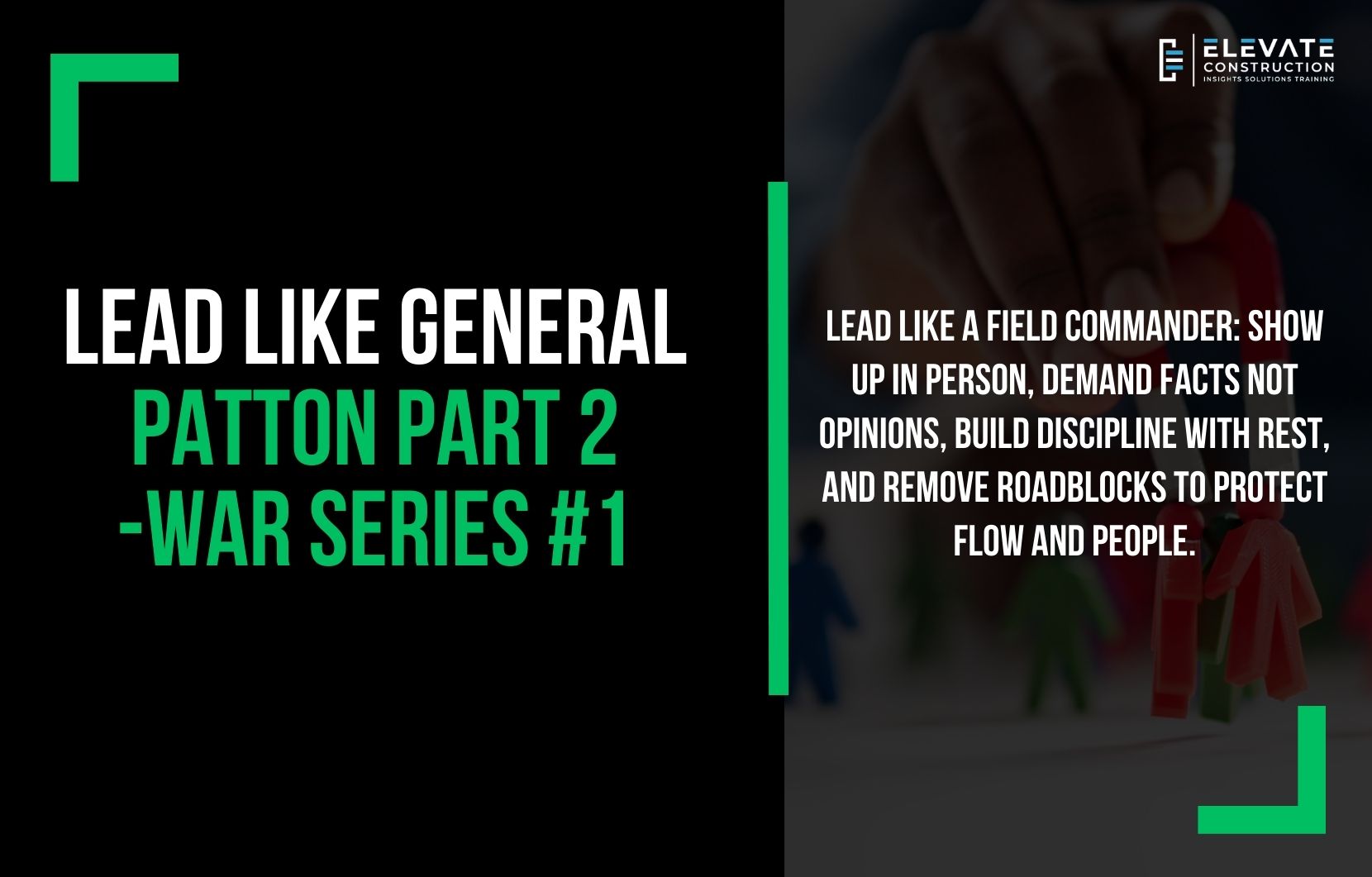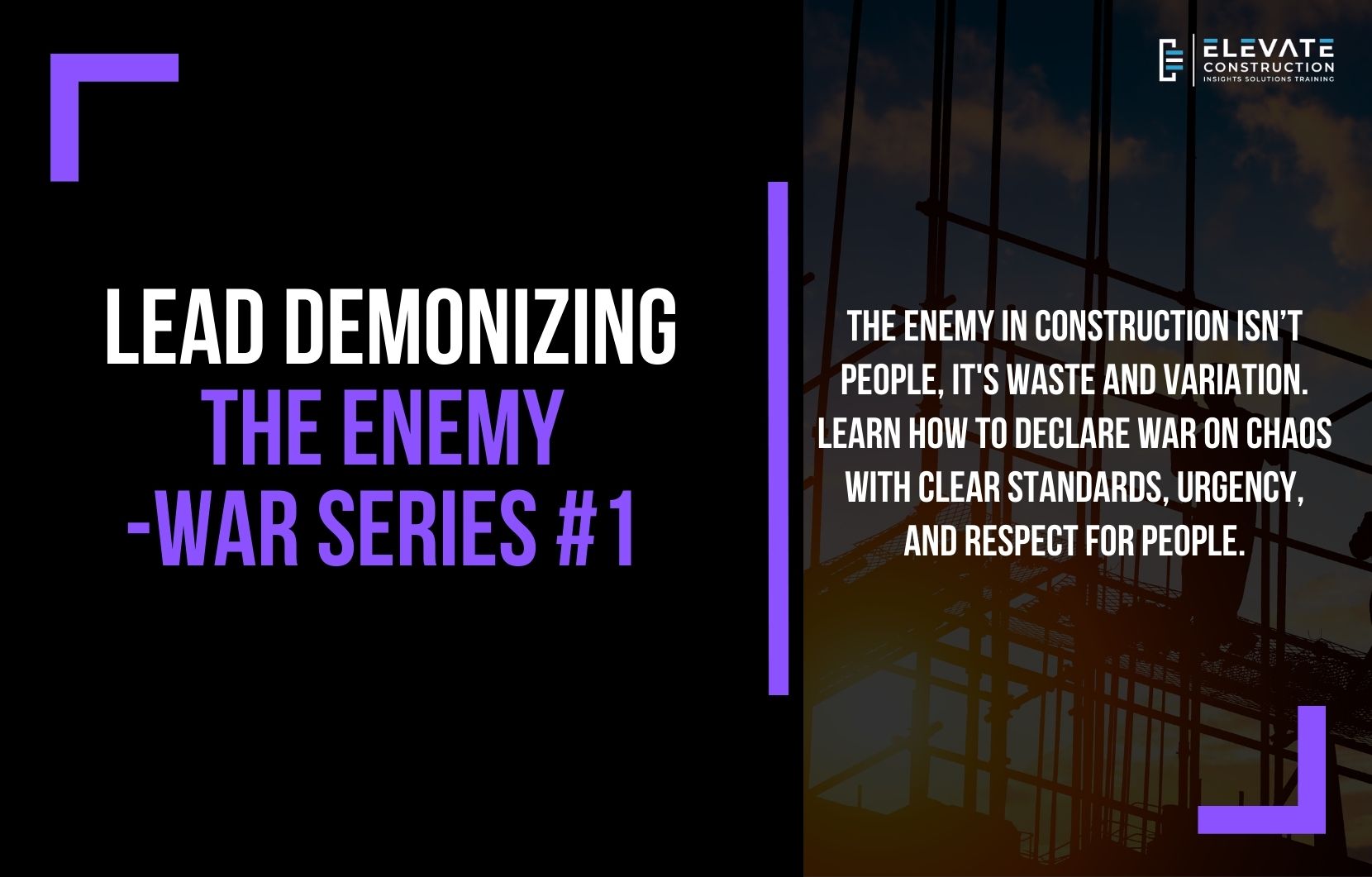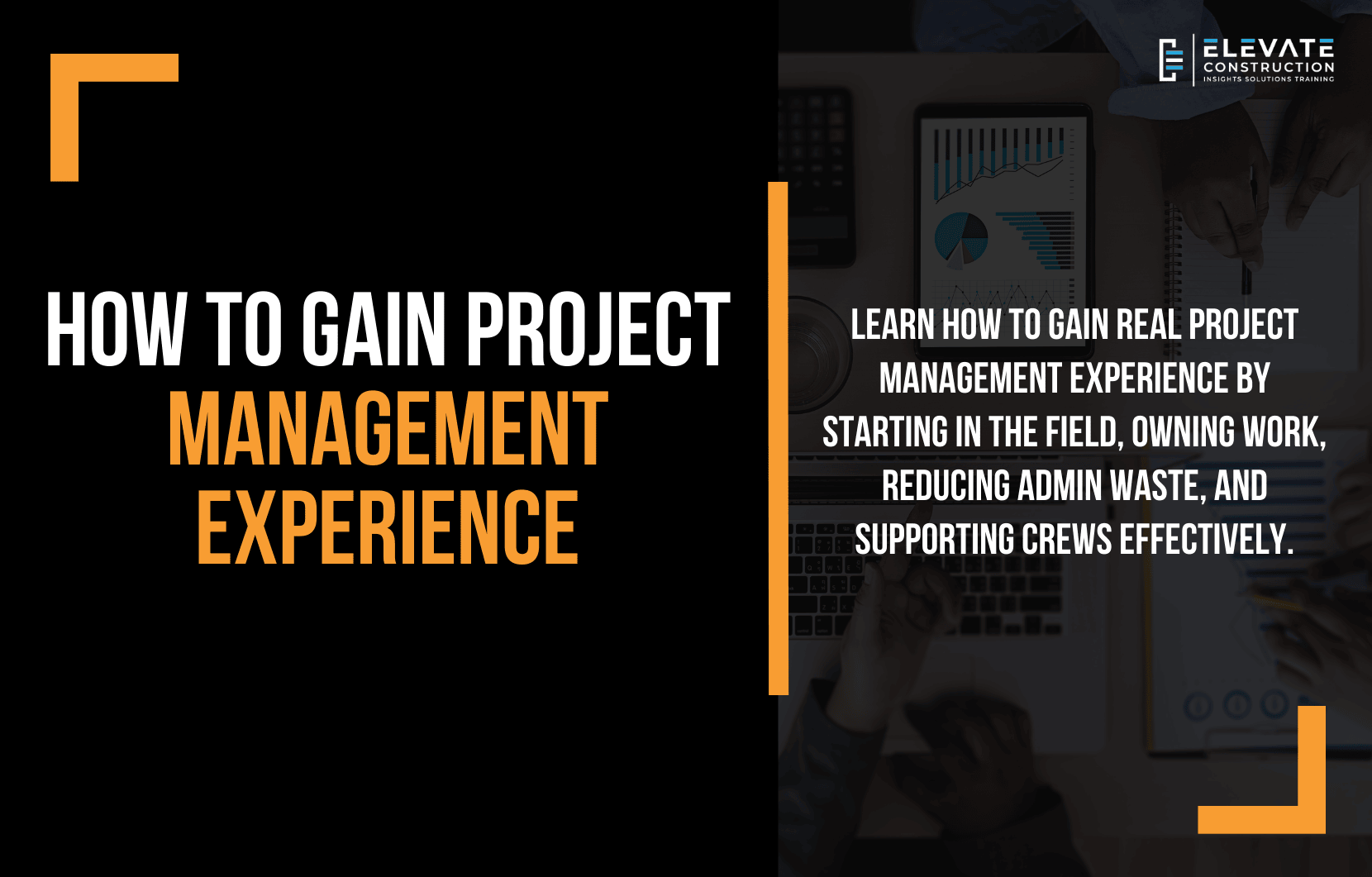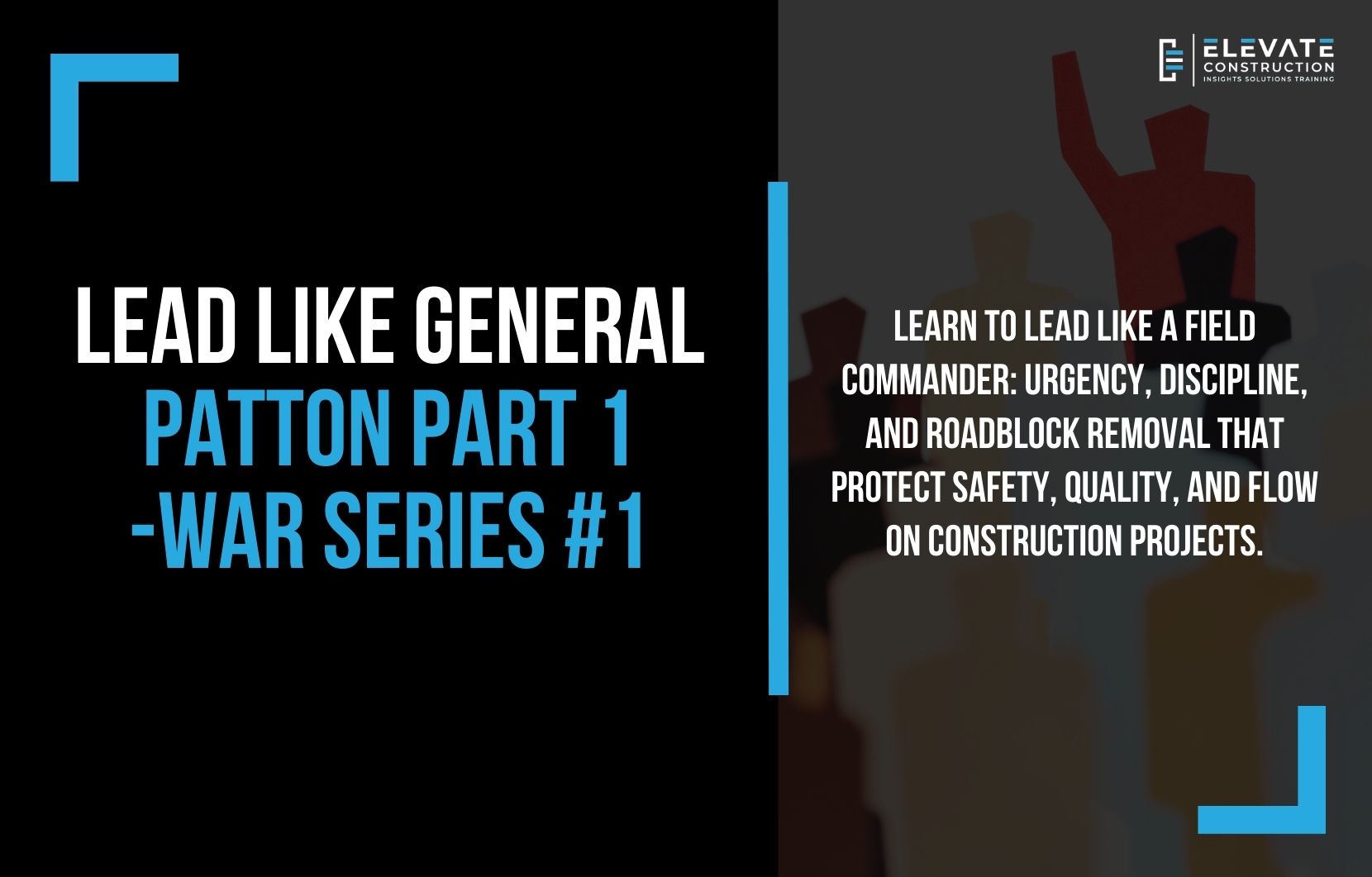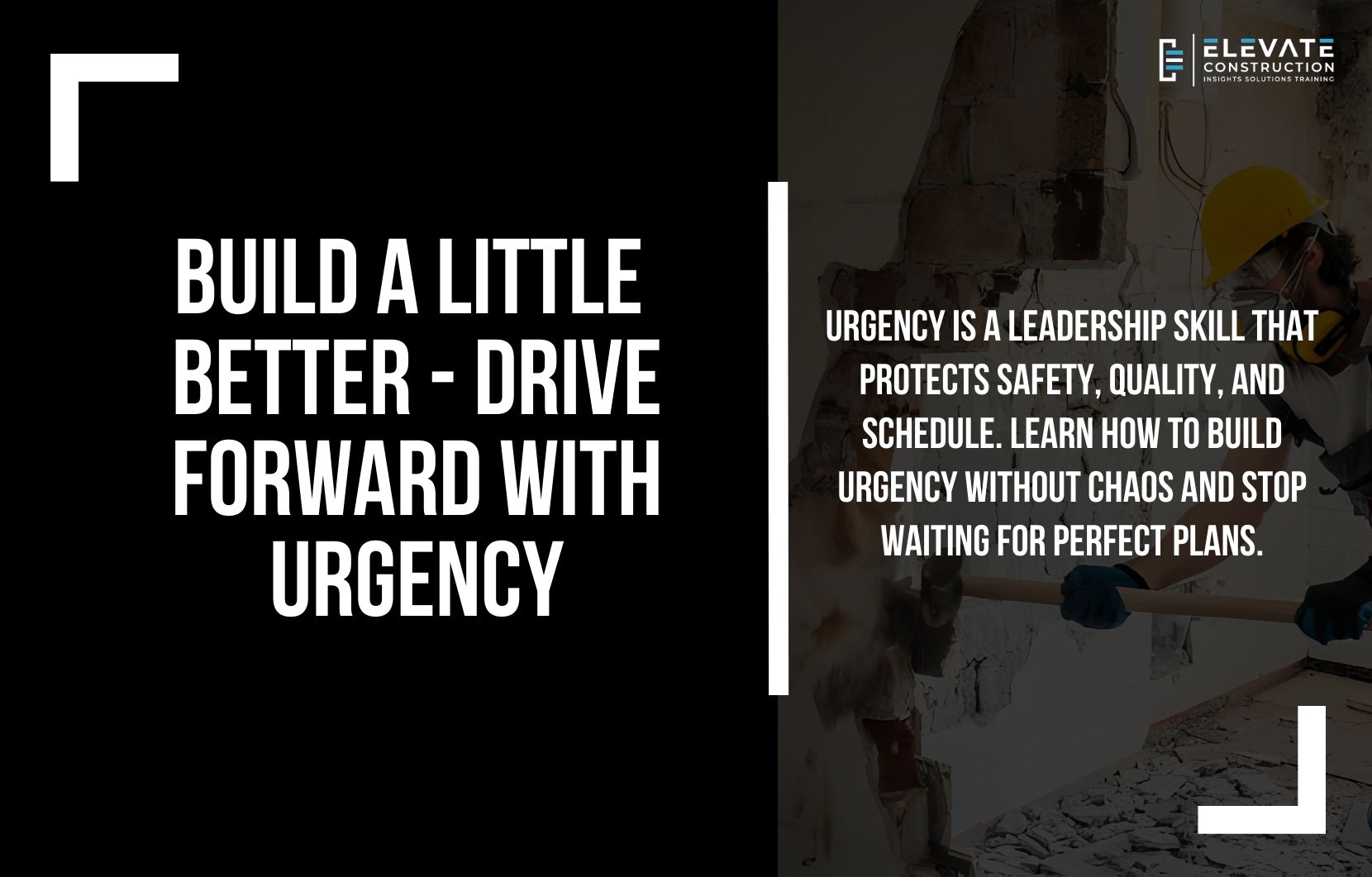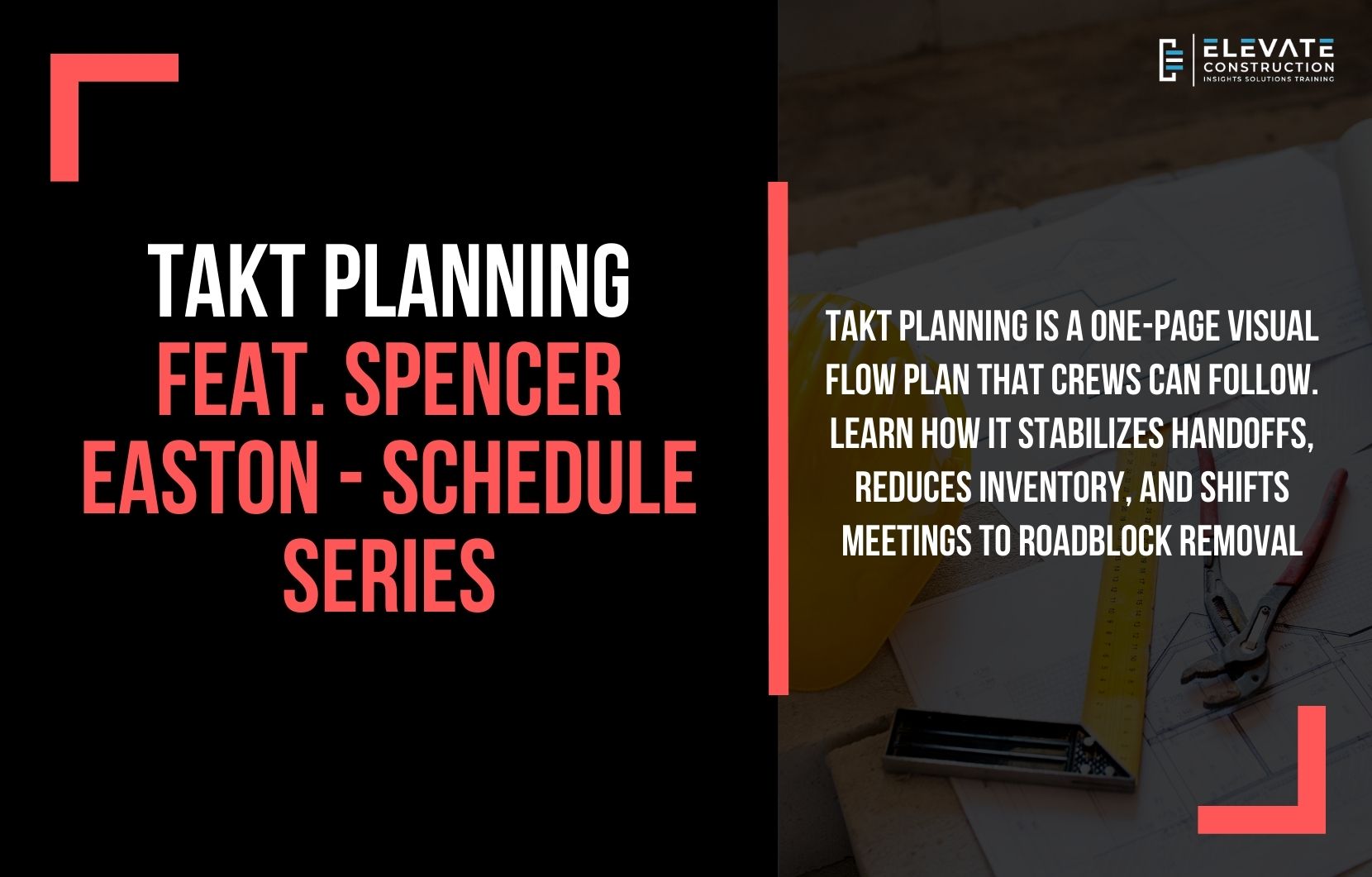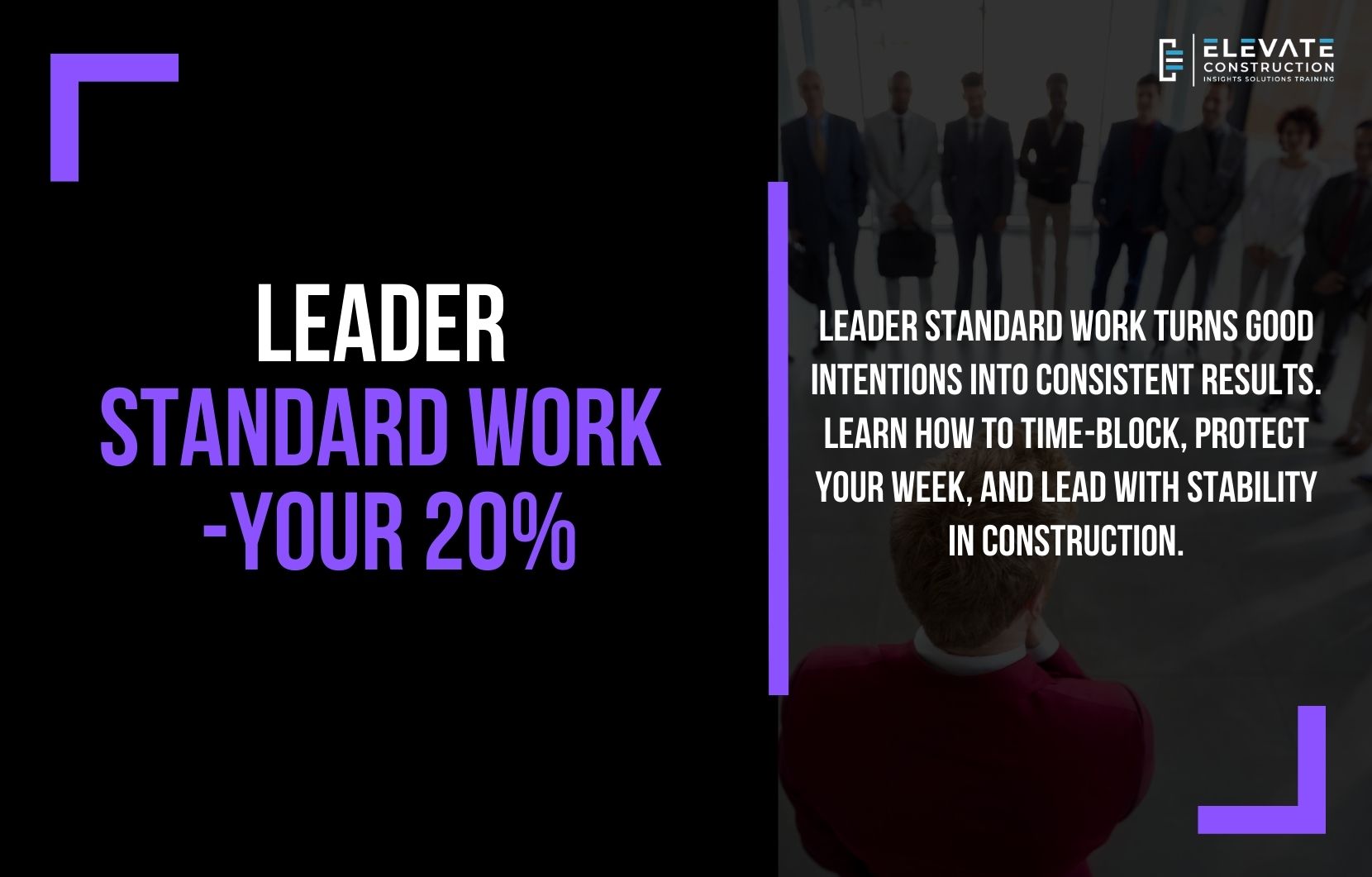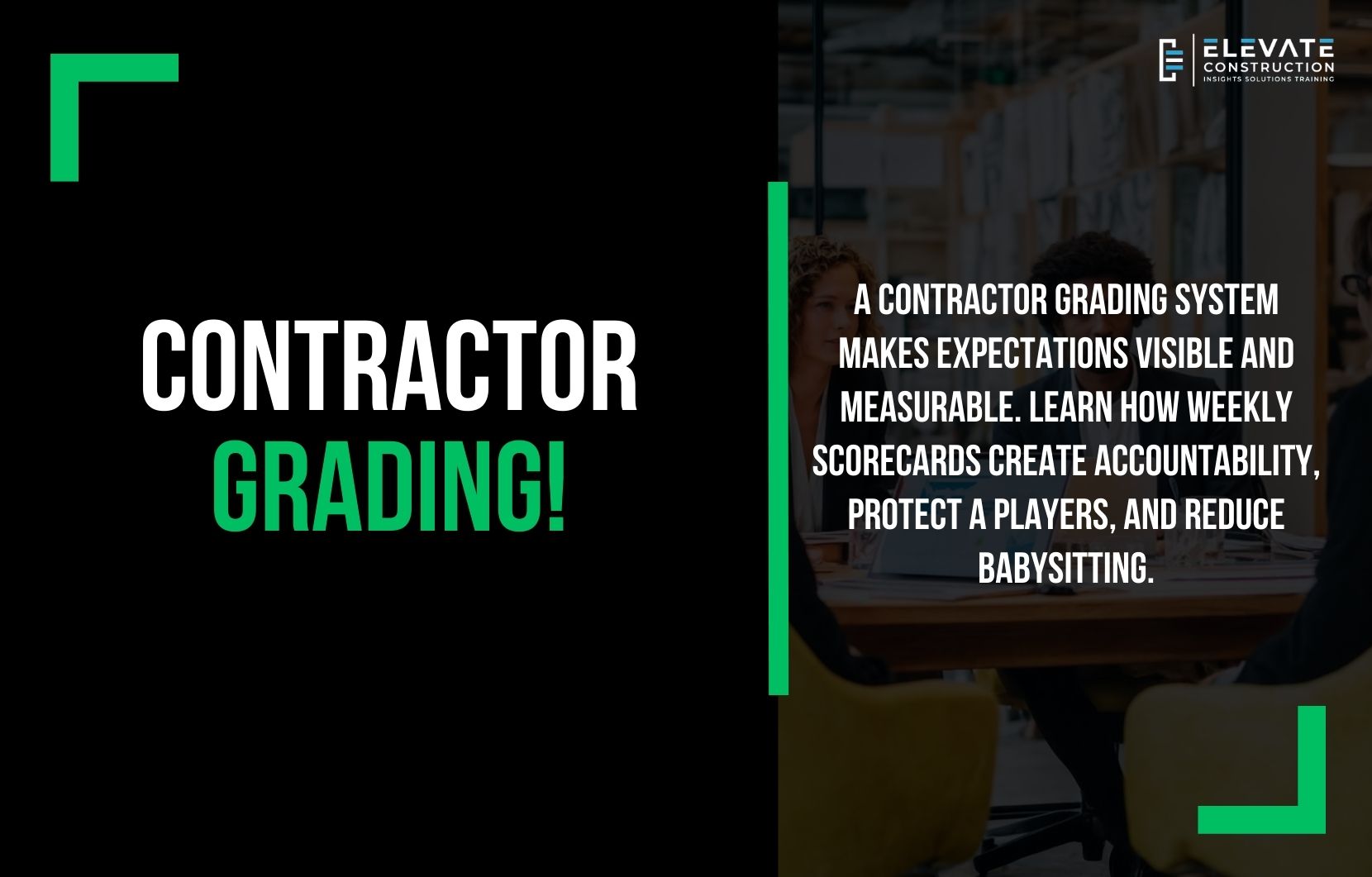Lead Like General Patton Part 2: Field Commander Orders for Discipline, Facts, and Flow
There’s a version of leadership in construction that happens from behind a desk. It’s calendar-heavy, meeting-heavy, and spreadsheet-heavy. It sounds organized, but it feels disconnected. The plan gets discussed, but the work doesn’t get stabilized. The job drifts, and leaders respond by adding more reporting instead of more presence. Jason Schroeder’s message in this episode is simple: if you want jobsite control, you have to lead like a field commander. Not with theatrics. Not with harshness. With discipline, clarity, and follow-through where the work actually happens.
Patton’s lessons apply because construction has the same realities: uncertainty, constraints, pressure, and consequences. When leaders delay decisions, tolerate disorder, or accept fuzzy reporting, the team loses the ability to see reality. And when you can’t see reality, you can’t manage it. That’s when waste grows, flow breaks, and people pay for it with stress, overtime, and unsafe shortcuts.
The Quotes That Set the Tone: Ingenuity, Dissent, Extra Effort, Moral Courage
This episode is anchored in a set of Patton quotes that Jason uses as “orders” for field leaders. They’re not meant to glorify war. They’re meant to sharpen leadership principles. The point is that leaders must build an environment where people think, speak up, and execute with discipline, not confusion. One quote in particular drives the heart of the message: “Never tell people how to do things, tell them what to do, and they will surprise you with their ingenuity.” Construction leaders often over-control because they don’t trust the system. They feel like if they don’t prescribe every step, the work will go sideways. But micromanagement is usually a symptom of unclear expectations and weak training. When leaders clarify the “what,” train the “how,” and then supervise the outcome, teams get stronger. When leaders try to be the method for everyone, the project becomes dependent on one person’s bandwidth.
Jason ties this back to moral courage and confidence. Leaders must be brave enough to let people think, and disciplined enough to hold the standard when execution doesn’t match the intent. That is where culture is created.
The D-Day Letter: Courage Isn’t the Absence of Fear
Jason references Patton’s letter to his son, written on D-Day, where Patton talks about shaky knees and courage anyway. That detail matters because construction leadership often pretends confidence is automatic. It’s not. There are days when a superintendent feels the weight of the job. There are days when a PM doesn’t know how the numbers will land. There are days when a foreman is carrying too much.
Courage in leadership is not pretending you aren’t nervous. Courage is taking the next right step anyway. It’s moving toward the problem, not away from it. It’s showing up, not hiding in reports. It’s telling the truth early, not delaying the hard conversation until it becomes a crisis. The system failed them; they didn’t fail the system. When leaders are unsupported, untrained, and overloaded, fear grows. But the antidote is still the same: presence, clarity, and a repeatable routine that creates control.
Never Tell People How: Give the “What,” Train the Team, and Stop Micromanaging
Patton’s quote about not telling people how is one of the most practical leadership corrections for construction. Too many leaders carry the mistaken belief that control comes from control. It doesn’t. Control comes from standard work, training, and clear expectations, backed up by follow-through.
If you want a team that can execute without you, you have to stop being the method. Instead, you define the outcome, define the constraints, and train the team in the standard. Then you supervise and coach. This is how you build capability instead of dependency. It also connects directly to Takt and LeanTakt thinking. Flow requires a system that runs without constant heroic intervention. If your plan requires you to micromanage every handoff, the plan is broken.
If Everyone Thinks Alike, Somebody Isn’t Thinking: How Huddles Should Work
Jason highlights a leadership trap: leaders who want agreement instead of thinking. In a good huddle, people speak up. They identify risks. They surface constraints. They challenge assumptions respectfully. The goal isn’t harmony. The goal is clarity.
If a huddle becomes a performance people nodding, nobody dissenting, and everyone leaving confused—then the huddle is not doing its job. Leaders need moral courage to invite dissent and discipline to keep it productive. The best teams don’t avoid problems; they surface them early enough to fix them. That’s the whole game.
Reports Must Be Facts, Not Opinions: The Source-of-Truth Standard
One of the strongest “field commander orders” in this episode is about reporting. Jason emphasizes that reports must be facts, not opinions. If updates are filled with spin, blame, or vague language, the project loses the ability to see reality. Then leadership starts making decisions based on narratives instead of data.
Facts look like: what was completed, what was not completed, what constraints are present, what decisions are needed, what deliveries are late, what areas are not ready, what the plan is for tomorrow. Opinions look like: “they’re not trying,” “we got crushed,” “it’s a mess,” “it should be fine.” Facts allow problem solving. Opinions create fights.
This is a truth-and-flow concept. Flow depends on reliable handoffs, and reliable handoffs depend on honest reporting. That’s why Takt planning, when done right, forces clarity: zones are either ready or not. A handoff either happened or it didn’t. You can’t talk your way around it. You have to fix it.
Lead in Person and Visit the Front Daily
Jason mentions a powerful observation: owners can feel the difference when field engineers and leaders are present. Presence changes everything. It reduces missed details. It catches problems early. It communicates urgency without yelling. It signals that the plan matters because leadership is close enough to see whether it’s real. Office-only leadership is not leadership. It’s management at best, and at worst, it’s avoidance. Leading in person doesn’t mean you never do paperwork. It means you don’t let paperwork replace the work. You go to the front, see conditions, confirm readiness, and coach the team where decisions actually land.
Orders Are 10%, Execution Is 90%: Supervision and Closed Loops
A central idea in this episode is that giving orders is the easy part. Execution is the hard part. Leaders love to talk. They love to create lists. They love to say “we need to.” But a project doesn’t move because you said it. A project moves because someone did it, and someone verified it. This is why supervision matters. Not hovering. Not policing. Supervision as in: check that the standard is understood, confirm the plan is doable, remove constraints, and follow up until the loop is closed. If you don’t close loops, the project fills with mental inventory and half-done work, and then the site feels like chaos even when everyone is working hard.
Field Commander Orders You Can Apply Tomorrow
- Lead in person by visiting the work daily and verifying readiness, not just progress.
- Require facts-only reporting so the team can see reality and solve real problems.
- Give clear “what” outcomes, then train the “how,” instead of micromanaging methods.
- Treat meetings as roadblock removal sessions, not debates about why the plan failed.
- Close loops through supervision: assign, confirm, follow up, and verify completion.
Rest, Roster, and Coverage: People Who Do Not Rest Do Not Last
Jason brings in a leadership truth that many in construction ignore until it’s too late: people who do not rest do not last. A leader who is exhausted makes worse decisions, communicates poorly, and creates panic in others. A team that is exhausted gets hurt, makes mistakes, and burns out. Rest is not a luxury. It’s part of the production system. If you want stable performance, you must design coverage. You must build a roster. You must protect time off. You must create an environment where people can recover and still keep the project moving. If the plan requires burnout, the plan is broken.
Discipline, Cleanliness, and Inventory Control: Standards That Prevent Injuries and Chaos
Discipline shows up in the basics: housekeeping, material control, clear access, clean zones, and not allowing inventory to pile up. Inventory is not just a Lean word. It’s a physical reality on jobsites. Too much material, too many open areas, too many half-finished tasks create congestion, trade damage, safety risks, and frustration. This is why flow matters. Takt helps because it limits work-in-process, protects zones, and makes the site predictable. But Takt doesn’t run itself. Leaders must enforce the standards that protect the rhythm.
Discipline Without Burnout: Standards That Protect People
- Build a coverage plan so leaders and key workers can rest without the project collapsing.
- Hold cleanliness and inventory control as non-negotiables because disorder creates injuries and rework.
- Provide basic care of people: bathrooms, break areas, and a steady pace that protects families.
- Keep plans simple and visual so the workforce can execute without constant clarification.
- Correct respectfully and consistently so standards become culture, not mood.
Connect to Mission
At Elevate Construction, the aim is stability field teams that can plan, schedule, and flow without burning people out. LeanTakt exists to make flow possible through visual systems, disciplined planning, and roadblock removal. Jason Schroeder’s lens is always system-first: when projects are chaotic, the answer isn’t to blame people. The answer is to improve the system that supports them. If your project needs superintendent coaching, project support, or leadership development, Elevate Construction can help your field teams stabilize, schedule, and flow.
Conclusion
If you want jobsite control, lead like a field commander. Show up in person. Demand facts, not opinions. Train people by giving clear outcomes and coaching execution. Close loops through supervision. Remove roadblocks fast enough to protect flow. And protect rest like it’s a critical activity, because people who do not rest do not last.The quote that anchors the episode is simple and sharp: “Never tell people how to do things, tell them what to do, and they will surprise you with their ingenuity.” Build a system where people can think, execute, and improve and then lead it with discipline and respect.
Frequently Asked Questions
What does it mean to lead like a field commander in construction?
It means leading in person, creating clarity, enforcing standards with discipline, and focusing on execution and roadblock removal rather than staying in meetings and reports.
Why does “facts not opinions” matter so much in reporting?
Because facts allow problem solving. Opinions create blame and conflict. A project can only improve when it can see reality clearly.
How do I avoid micromanaging while still maintaining control?
Give clear outcomes (“what”), train the standard (“how”), then supervise execution through follow-up and verification. Control comes from systems and coaching, not prescribing every step.
How does rest relate to production and leadership?
Exhausted leaders and crews make worse decisions, get hurt more, and burn out. A coverage plan and roster protect people and stabilize performance.
Where does Takt fit into these leadership principles?
Takt supports simple, visual plans and flow, but it requires discipline, zone control, honest reporting, and roadblock removal to maintain rhythm.
If you want to learn more we have:
-Takt Virtual Training: (Click here)
-Check out our Youtube channel for more info: (Click here)
-Listen to the Elevate Construction podcast: (Click here)
-Check out our training programs and certifications: (Click here)
-The Takt Book: (Click here)
Discover Jason’s Expertise:
Meet Jason Schroeder, the driving force behind Elevate Construction IST. As the company’s owner and principal consultant, he’s dedicated to taking construction to new heights. With a wealth of industry experience, he’s crafted the Field Engineer Boot Camp and Superintendent Boot Camp – intensive training programs engineered to cultivate top-tier leaders capable of steering their teams towards success. Jason’s vision? To expand his training initiatives across the nation, empowering construction firms to soar to unprecedented levels of excellence.

